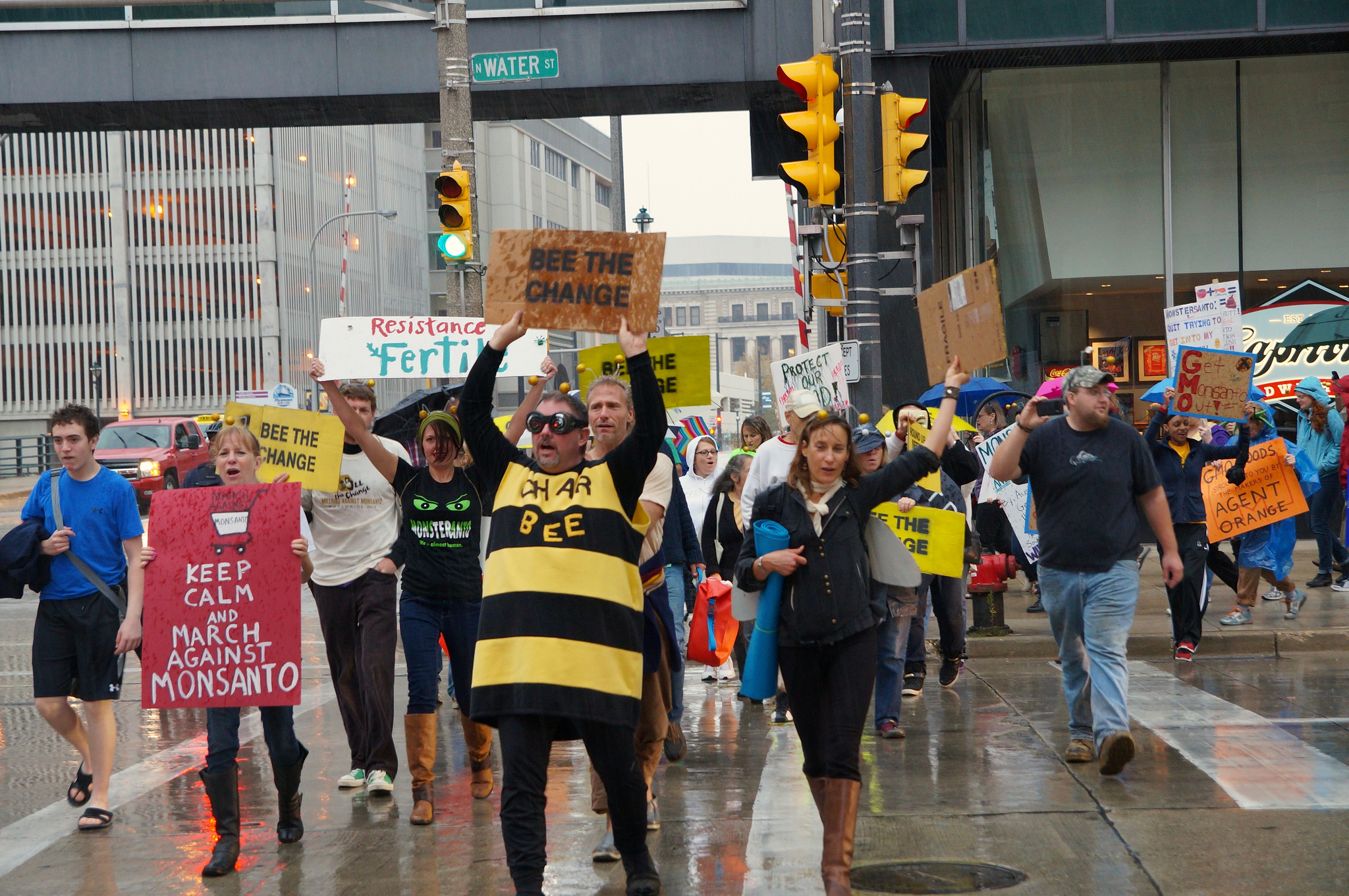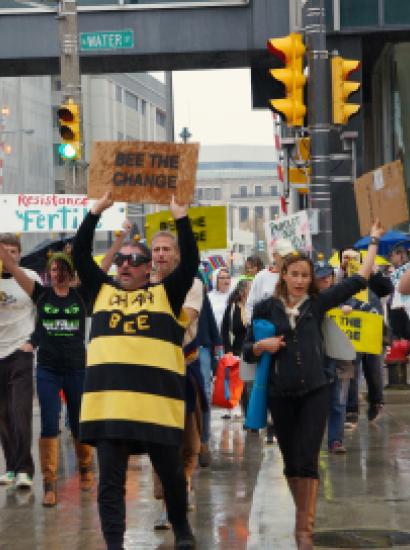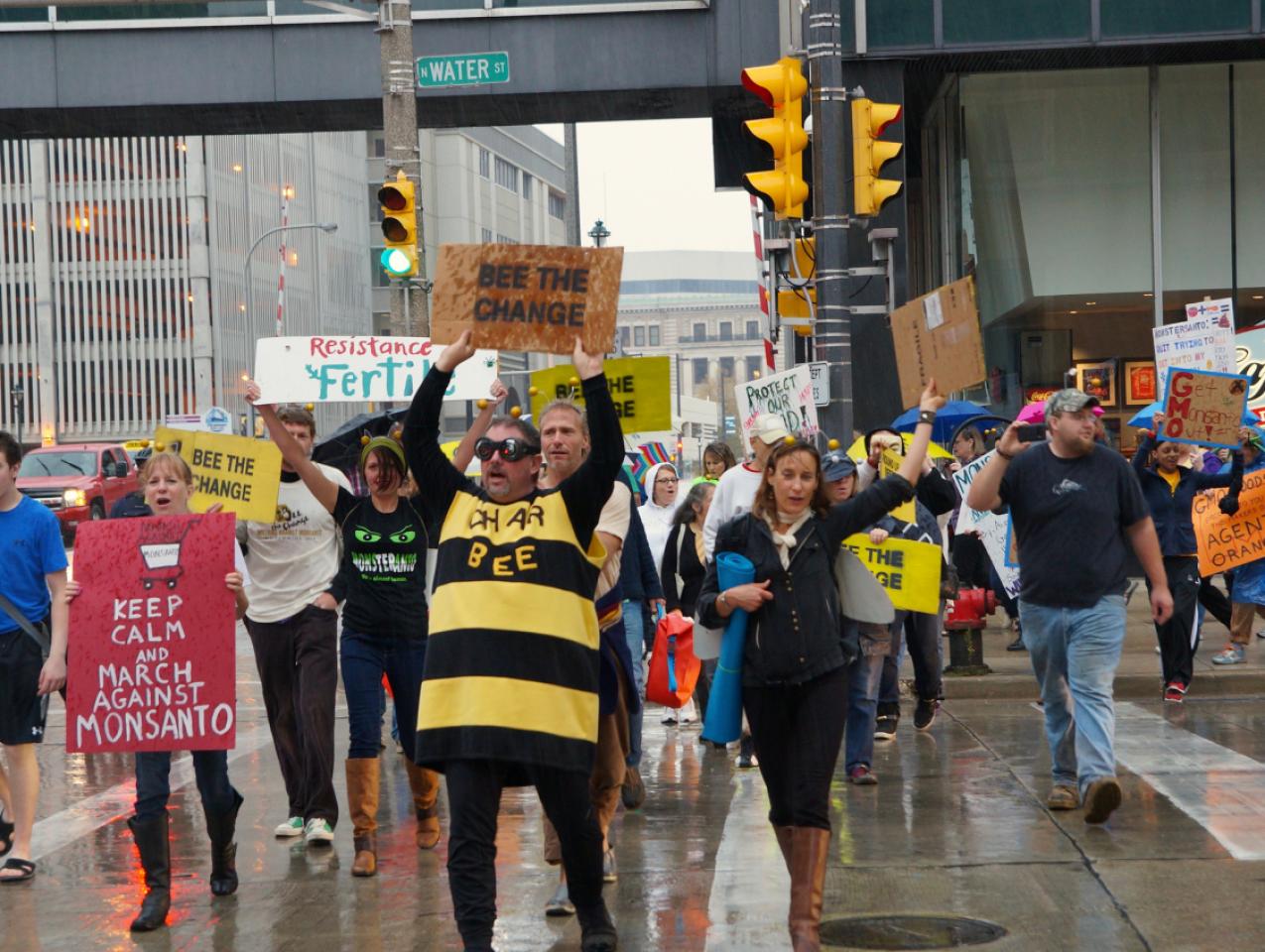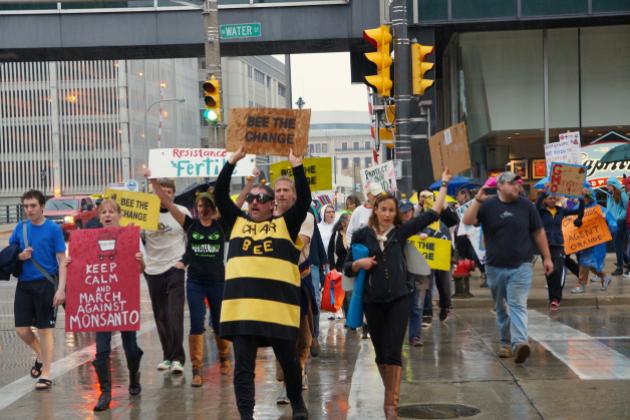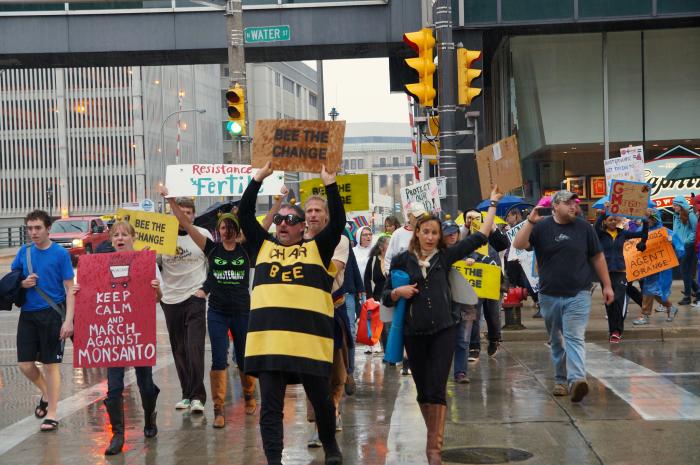- Energy & Environment
For four decades genetically modified organisms (GMO) have been vilified and caricatured as “Frankenfoods,” the abominations of mad scientists meddling with nature and putting the human race at risk. Currently, over sixty bills have been introduced in over twenty states that will require food labels indicating if the product contains GMO. Globally, over sixty countries restrict or ban GMO outright, including eight E.U. nations and countries in Africa suffering from famine and malnutrition that could be alleviated by genetically modified crops.
Critics accuse GMO of being unhealthy, increasing chemical pollution, threatening other species, causing dangerous side effects, and harming the environment. But as plant molecular biologist Robert Goldberg of UCLA points out, “In spite of hundreds of millions of genetic experiments involving every type of organism on earth, and people eating billions of meals without a problem, we've gone back to being ignorant.”
In fact, no one has yet documented a single case of illness from GM foods, even as about 3,000 people a year in the U.S. die of food-borne illnesses, many of them contracted from “organic” foods. All the dangers of GMO that worry critics are speculations of what might happen in the distant future. Mixing genes from different species, critics contend, will create alterations in the organism that will in the long term produce destructive effects, or genetic material from an engineered crop someday may transfer into the human genome.
Meanwhile, in contrast to these theoretical risks, GM foods are improving people’s lives, especially in the developing world. Food is cheaper, meaning more people are adequately fed. Crops are 20 to 30 percent more productive, so less land is needed to feed more people. Pesticide use is diminishing, lessening damage to the environment. And if the bans on GM crops were not deterring some countries from planting it, Golden Rice, genetically engineered to contain vitamin A, could be reducing the one million deaths, and half a million cases of blindness, occurring in the developing world every year because of vitamin A deficiency.
If GM foods have an “astonishing range of potential applications,” according to James D. Watson, the co-discoverer of DNA, that could radically improve daily life for billions in the developing world, why this war against their use? The origins of this animus lie more in culture than in science––in an ancient myth about nature and humanity’s relationship to the environment, and in the angst about technology embedded in those myths.
The Golden Age myth historically arose when more complex urban civilizations developed that increased the distance between people and nature. The Golden Age is that earlier existence before cities, agriculture, and technology, a time idealized as simpler and more fulfilling, closer to a maternal nature that is “untouched by the hoe and unwounded by the plow,” as the Roman poet Ovid put it—a time when nature “herself gave all things,” wrote Ovid. In the Golden Age, there was no crime or sickness, no war or competition for wealth, no oppressive social or political institutions.
But this paradise is lost, and the human race degenerates into the Iron Age, a time of wickedness, crime, hard work, war, disease, private property, and greed, the “cursed love of possessing,” as Ovid called it. Key to this degeneration is the rise of technology, particularly sea-faring, metallurgy, agriculture, and mining. Already in antiquity the contrast is set: the idealized, lost peaceful world of life in harmony with nature, and the miserable present world of crime, sickness, and war.
This myth has been a powerful constant in Western literature and thought. In the early nineteenth century, the impact of industrialization and urbanization on the environment and social life seemingly confirmed this ancient wisdom. In contrast to what English poet William Blake called the “satanic mills,” pristine nature beckoned as the restorative of a more authentic existence. William Wordsworth’s memories of the rural landscape, for example, give solace to a life that “mid the din/ of towns and cities” is stunted by the “fretful stir/ Unprofitable, and the fever of the world.” In reality, of course, fantasies of a benign nature ignore the chronic malnutrition, early death, daily violence, famine, disease, and constant pain of life before the advances of technology.
The idealizations of nature remain powerful today. Much of the leftist critique of globalized capitalism recycles with a veneer of Marxist theory the demonization of technology and industrialism that first appears in the myth of the Iron Age. “All natural,” “organic,” and “no GMO” are labels that savvy marketers use to sell food. And of course, the stock-in-trade of dystopian science fiction is the mad scientist whose unnatural creations threaten to destroy the earth and the human race.
The inherent dangers and wickedness of technology and industrialism will lead, environmentalists argue, to apocalyptic destruction caused by man’s unnatural alterations of the natural world, whether these result from GM crops or pumping carbon dioxide into the atmosphere. The contemporary twist on these traditional motifs is the patina of scientific research layered over mythic longings and anxieties. Yet despite those pretensions to scientific precision and rigor, the obsession with potential risks has obscured the proven advances new technologies have made, particularly in food production.
Inorganic fertilizers, for example, are often decried as dangerous and “unnatural.” Part of the appeal of “organic” foods comes from their claim that no such fertilizers are used, implying that there is some danger to them. In fact, a 2012 Stanford University meta-analysis of existing studies found that organic foods carried no significant health or nutritional benefits. Moreover, the animus against inorganic fertilizers ignores the role they have played in increasing food production and reducing famine in the developing world.
The father of the “green revolution,” Norman Borlaug, saved perhaps a billion lives across the globe with his high-yield agricultural techniques using artificially engineered plant varieties and inorganic fertilizers. In India, the yield of wheat per acre went from 800 pounds in 1963 to 6,000 pounds today. As a result, 100 million acres of virgin land did not have to be cleared and farmed to feed a growing population. Yet the international environmentalism movement constantly opposed Borlaug, just as it is today blocking the development of GM crops in Africa.
GMO technology promises to be the next agricultural revolution, one that can increase yields even further, reduce the use of pesticides, roll back deforestation, and provide not just calories but needed nutrition to billions across the planet. Are there possible risks and unforeseen consequences? Of course there are, for nothing humans do is risk-free. Our network of roads and highways confers numerous social and economic benefits, yet it costs 33,000 deaths and many more injuries every year. Hospitals save millions of lives, yet medical mistakes and misdiagnoses kill over 100,000 people a year. Those are costs we accept and risks we run every day, most of us without noticing, let alone obsessing over them. The rational approach is to weigh benefits against risks, always with the fundamental aim of improving life for the greatest number of people both now and in the future.
The irrational battle against GMO is just one front in a larger environmentalist war against the modern world. Climate change is another, one equally reflective of the dislike of industrialism and capitalism, which have created and distributed more wealth to more people than was even imaginable a century ago. The attack on hydraulic fracturing, part of the war against carbon, irrationally harms its own goal to reduce atmospheric carbon dioxide, for the switch from coal to natural gas, which emits half the carbon of coal, to generate electricity can “green” the environment more than anything the environmental lobby does. Particularly in the developing world, economic development, which for now is dependent on carbon-based energy, is the best way to protect the environment in the long run. Spending money on improving the environment is the luxury of those who aren’t worried about their children eating for one more day.
Armed more with an ancient myth about a lost natural paradise, the critics of GMO are keeping billions in the developing world from enjoying the nutrition and adequate food that Western elites take for granted. As Borlaug said before his death, such critics have “never experienced the physical sensation of hunger. They do their lobbying from comfortable office suites in Washington or Brussels. If they lived just one month amid the misery of the developing world, as I have for fifty years, they'd be crying out for tractors and fertilizer and irrigation canals and be outraged that fashionable elitists back home were trying to deny them these things.”
Those who have the luxury of abundant and reliable food can afford to decry the economic expansion that is the developing world’s best hope of mitigating the myriad problems afflicting their people. It is criminal for rich Westerners to agitate for policies that keep the benefits of biotechnology from those desperate for its boons, and to pass the costs of their idealism onto those least able to suffer the consequences.







